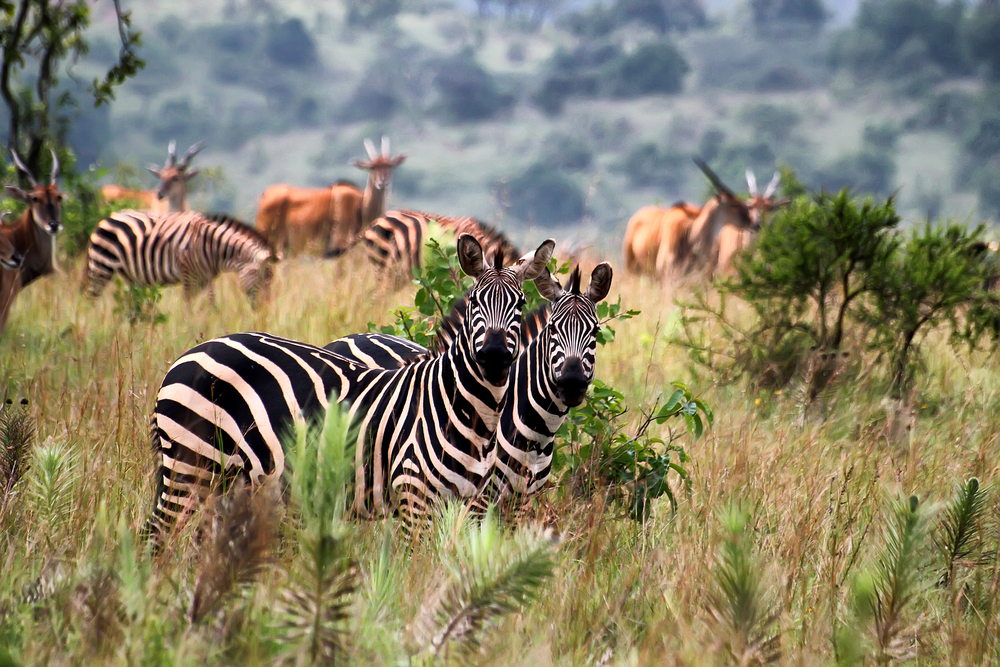Gishwati-Mukura Overview
Gishwati-Mukura National Park, located in the northwestern region of Rwanda, is a magnificent and relatively new protected area encompassing approximately 13 square miles (34 square kilometers). Established in 2015, this park is a merger of two separate forests: Gishwati and Mukura. The park plays a crucial role in biodiversity conservation and ecological restoration, offering a haven for a variety of wildlife and plant species. Set within the Albertine Rift, Gishwati-Mukura National Park is a testament to Rwanda’s commitment to preserving its natural heritage.
The park’s landscape is a blend of rolling hills, dense rainforests, and open grasslands. The lush forests of Gishwati and Mukura are characterized by towering trees, thick underbrush, and a network of streams and rivers. These forests provide essential habitats for a wide range of species, contributing to the park’s rich biodiversity. The ongoing reforestation and conservation efforts have rejuvenated these ecosystems, making the park a thriving natural sanctuary.
Gishwati-Mukura National Park is home to a remarkable array of wildlife. Visitors can encounter several primate species, including the endangered eastern chimpanzee, golden monkeys, and blue monkeys. The park is also a sanctuary for various mammals such as servals, genets, and bushbucks. Birdwatchers will be delighted by the presence of over 230 bird species, including the Rwenzori turaco, the great blue turaco, and the white-headed wood hoopoe. The park’s diverse avian population adds to its ecological richness, making it a prime destination for bird enthusiasts.
Exploring Gishwati-Mukura National Park offers a unique blend of adventure and tranquility. Guided nature walks and primate trekking provide opportunities to observe wildlife in their natural habitats and explore the park’s dense forests. These treks offer visitors a chance to immerse themselves in the serene beauty of the rainforest while learning about the park’s ongoing conservation efforts. The park’s relatively untouched landscapes and limited tourist infrastructure ensure a peaceful and intimate experience with nature.
Conservation efforts in Gishwati-Mukura National Park are focused on restoring its ecosystems and protecting its diverse wildlife. The park faces challenges such as deforestation and habitat degradation, but ongoing initiatives aim to address these threats. Efforts include reforestation projects, anti-poaching patrols, and community engagement programs. By involving local communities in conservation activities and promoting sustainable land use practices, these initiatives help ensure the long-term protection of the park’s natural resources.
Gishwati-Mukura National Park also holds significant cultural importance. The park is located near several traditional Rwandan communities, where visitors can learn about the local culture and traditions. These communities have a deep connection to the land and its wildlife, and their traditional knowledge and practices are integral to the park’s conservation efforts. Engaging with the local culture through community-based tourism initiatives adds a rich cultural dimension to the visit.
In summary, Gishwati-Mukura National Park is an ecological jewel that showcases the rich biodiversity and stunning landscapes of Rwanda. Its diverse ecosystems, abundant wildlife, and vibrant birdlife make it a must-visit destination for nature enthusiasts and eco-tourists. The park’s commitment to conservation and community involvement underscores its importance as a model of sustainable environmental management. Whether exploring the dense rainforests, observing the diverse wildlife, or engaging with the local culture, visitors to Gishwati-Mukura National Park will be captivated by its natural beauty and ecological significance













































































